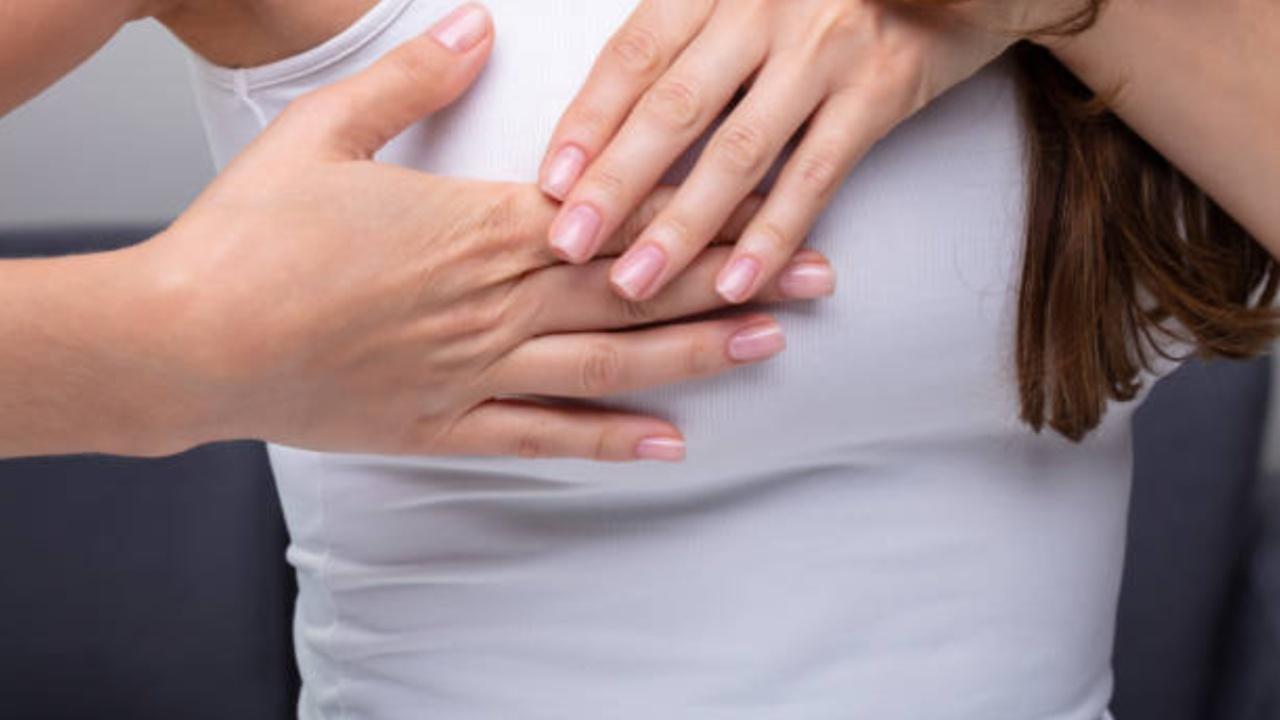40 per cent of diagnosed breast cancer cases are from women who detected a lump at home

Image for representational purposes only. Photo Courtesy: iStock
The importance of breast cancer awareness can never be amplified enough. A stitch in time saves nine, and early detection saves lives! While breast self-exams at home can’t replace a medical check-up, they’re still very useful in finding any abnormalities or changes to your bust.
ADVERTISEMENT
Did you know 40 per cent of diagnosed breast cancer cases are from women who detected a lump at home? So here’s how to get started, what to do, what’s normal, and the next steps to take if you notice anything! Are you ready?
Step 1: Take a long look
Buckle up, and get comfortable darling. It’s in your breast interest to be familiar with how your bust looks normally. Step 1 is visual, so get in front of a mirror, undress, and start observing. Keep your hands at your sides and then clasp them above your head to look at your breasts at different angles. Look for any changes in contour, swelling, or dimpling of skin, or any differences around the nipple, especially if it’s in just one of the breasts. Breast cancer awareness starts at home and it’s imperative you make yourself comfortable.
Step 2: Feel around
Check yourself, and don’t ignore the warning signs. Step 2 involves thoroughly touching your bust and feeling around – do it for your body that loves you the best.
You can do this step either by standing up in the shower or lying down with a pillow under the breast you’re checking. Use the pads of your fingers (not just the tips) to thoroughly feel around, and with different levels of pressure. Press down all around the breasts and under your armpits in a methodical pattern and make sure to squeeze the nipples to check for any discharge. You should be looking out for any lumps, thickening, hardening, or knots at this step.
Symptoms of breast cancer
Breast Cancer Awareness Tl: Dr. – If you’re looking directly for the symptoms of breast cancer, here are the ones from above in more detail:
A constant pain in the armpit or one part of the breast
A change in colour, with the breasts looking red or inflamed
Dimples, puckers, bulges, or ridges on the skin
Flaky skin, itchiness, sores, or rash
The nipple becomes irregular in shape or sinks into the breast
Unusual discharge from one or both of the nipples
What to do, when
A self-exam should be conducted once a month is what the Breast Cancer Awareness Protocol dictates. If you do find a lump or show any of the other symptoms, make an appointment with the doctor – but it isn’t the end of the world! 8 out of 10 lumps are not cancerous and can be easily removed. Breast cancer itself is also fully treatable - depending on a variety of factors – so make sure to get regularly screened as well. Do your breast for your breasts!
Noticed anything? Make an appointment with the doctor for further check-up immediately. And if you’re unsure, mammography can detect tumours before they’re felt too.
This story has been sourced from a third party syndicated feed, agencies. Mid-day accepts no responsibility or liability for its dependability, trustworthiness, reliability and data of the text. Mid-day management/mid-day.com reserves the sole right to alter, delete or remove (without notice) the content in its absolute discretion for any reason whatsoever
 Subscribe today by clicking the link and stay updated with the latest news!" Click here!
Subscribe today by clicking the link and stay updated with the latest news!" Click here!







